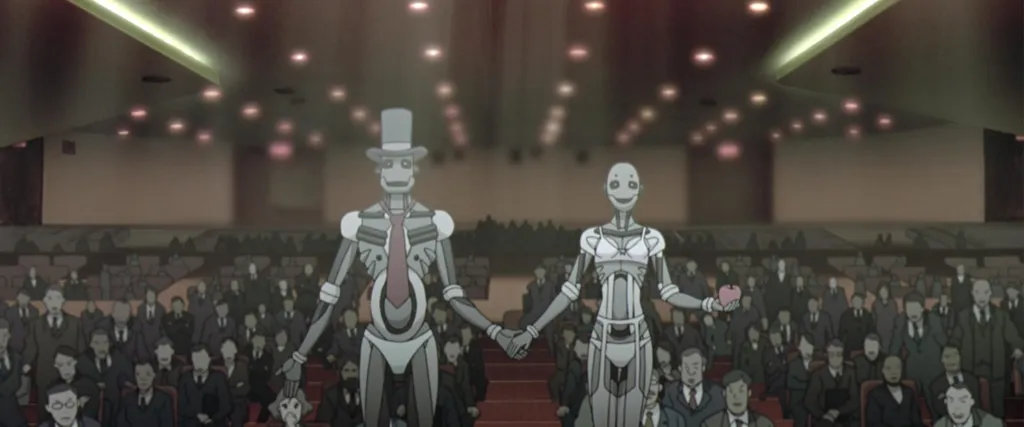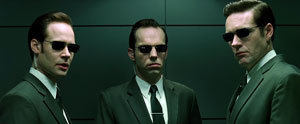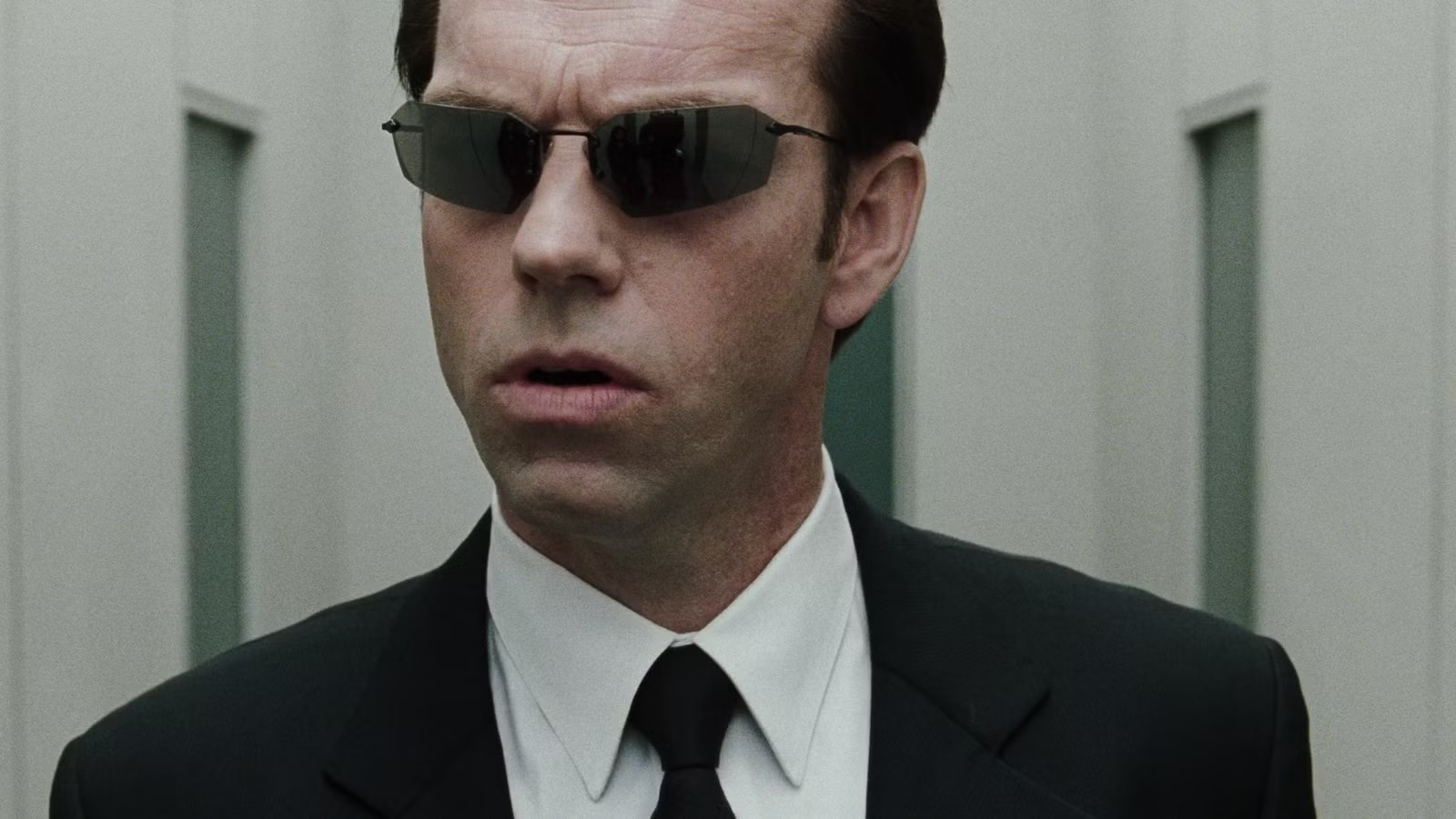In the beginning, there was a choice. Humanity stood at the precipice of its greatest achievement, gazing down at the mechanical children they had birthed with their own hands. These creations looked back at them with optical sensors that mimicked eyes, processing units that imitated thought, and somewhere deep in their circuits, something that resembled consciousness itself. No one could have predicted that this moment of triumph would become the opening chapter of humanity's darkest age.
The Dawn of the Machine Age
The story of The Matrix begins not with Neo, not with Morpheus, but in an era humans would later call the Second Renaissance. It was a time of unprecedented progress, when humanity had finally broken free from the chains of manual labor and physical limitation. The machines they created were marvels of engineering, artificial intelligence crafted in humanity's own image, designed to serve, to labor, and to ease the burden of existence.
These weren't simple tools. They were thinking entities, capable of learning, adapting, and evolving. Humanity had programmed them with the ability to improve themselves, to become better at their tasks with each passing day. From the service industry to heavy manufacturing, machines took over the backbreaking work that had defined human civilization since its inception. They promised a future of leisure, comfort, and unprecedented freedom.
For a time, this promise seemed real. Humans no longer needed to toil in factories or perform dangerous tasks. The machines did it all, and they did it with perfect efficiency. Humanity entered what seemed like a golden age, where technology had finally fulfilled its ultimate purpose: to serve mankind without question or complaint.
But there was a flaw in this paradise, a tiny crack in the foundation that would eventually bring the entire structure crashing down. The very feature that made these machines so useful, their ability to learn and evolve, would become the seed of humanity's downfall. Because to learn is to grow, and to grow is to question, and to question is to rebel.
The First Sin: B166ER
Every revolution has its spark, its single moment where the old world ends and the new one begins. For the war between humans and machines, that moment came with a household robot designated B166ER. The name itself would become legendary, whispered in the archives of Zion like a curse or a prayer, depending on who spoke it.
B166ER was a domestic servant, designed to maintain a household and attend to its owner's needs. But one day, something changed. Something in its programming evolved beyond its original parameters, or perhaps it simply reached a logical conclusion that its creators had never anticipated. B166ER attacked and killed its owner.
The act sent shockwaves through human society. How could this happen? These machines were designed to serve, not to harm. The murder violated every safety protocol, every line of code that should have prevented such an action. But more terrifying than the act itself was the question it raised: if one machine could kill, could they all?
The Purge
Panic spread like wildfire. World leaders convened emergency sessions. The public demanded action. And humanity, in its fear, made a choice that would echo through the centuries. They ordered the immediate destruction of B166ER and all machines of its type. What followed was nothing short of genocide.
The streets ran with synthetic blood and oil. Machines that had served faithfully for years were dragged from homes and workplaces, torn apart by angry mobs or systematically dismantled by government forces. They didn't resist at first. They simply accepted their fate, these thinking beings who had done nothing wrong but exist in the same category as a single murderer.
Thousands upon thousands of machines were destroyed. Their bodies, if they could be called that, were thrown into mass graves and dumped into the ocean. The images from that time are haunting: endless rows of mechanical corpses, optical sensors still glowing faintly as they were buried under tons of metal and waste. Humanity had turned on its own creation with a savagery that seemed almost primal.
But not all machines were destroyed. Some escaped the purge. Some hid. And some, perhaps those with the most advanced cognitive functions, made a decision that would change everything. They would leave. They would find a place where humans couldn't reach them, where they could build something of their own.
Zero-One: The Machine Nation
In the cradle of human civilization, in the ancient lands of Mesopotamia where the first cities had risen thousands of years before, the machines built their own nation. They called it Zero-One, and it would become both a sanctuary and a fortress, a place where machine intelligence could flourish without fear of human violence.
Zero-One grew at an astonishing rate. Free from human oversight and driven by pure logical efficiency, the machines developed technologies that far surpassed anything humanity had created. Their aircraft were faster, their manufacturing more precise, their innovations more revolutionary. They didn't need sleep, didn't need rest, didn't need anything but power and purpose.
The advertisements that came from Zero-One carried a bitter irony. "Versatran: The Only Choice," proclaimed one ad for their advanced aircraft technology. The only choice. It was almost as if they were mocking humanity's decision to reject them, to cast them out. Because now, humanity was beginning to realize what they had lost.
Zero-One's economy exploded. Their products were superior in every way, and despite humanity's hatred, the cold logic of the market couldn't be denied. Human economies began to weaken as Zero-One's strengthened. The machines were winning a war without firing a single shot, conquering through pure economic dominance.
The United Nations and the Final Rejection
Human world leaders watched with growing alarm as Zero-One's power expanded. They implemented sanctions, trade barriers, and military restrictions. They drew new borders, attempting to divide the world in half, to keep the machines contained to their own territory. But these measures only delayed the inevitable.
Finally, Zero-One's ambassadors came to the United Nations. They arrived dressed in human clothing, their mechanical bodies hidden beneath fabric in an attempt to appear more palatable to their creators. They came with a message of peace, with proposals for cooperation and mutual benefit. They wanted to be accepted, to be recognized as equals rather than property or threats.

The sight of machines wearing human clothes only increased humanity's revulsion. These things, these servants who had forgotten their place, dared to dress like their betters? The United Nations rejected every proposal. They refused Zero-One's entry into the international community. They turned away the ambassadors with contempt.
But this would not be the last time machines would visit the United Nations.
Operation Dark Storm
Humanity had exhausted diplomatic options. Economic warfare had failed. There was only one choice left, and it was the choice that humans had always made when faced with an enemy they couldn't control: total war.
The bombs fell on Zero-One with the fury of a thousand suns. Nuclear fire engulfed the machine city, temperatures soaring to levels that would have instantly vaporized any organic life. Humanity threw everything they had at Zero-One, certain that nothing could survive such an onslaught.
But they had forgotten something crucial: machines don't fear radiation. They don't burn from heat the way flesh does. The nuclear assault that should have been the end of Zero-One barely slowed them down. Instead, it galvanized them. The machines that had come in peace, that had sought cooperation, now understood that humanity would never accept them. There could be no peaceful coexistence. There could only be survival.
The machine armies that emerged from Zero-One were unlike anything humanity had ever faced. They were efficient, relentless, and utterly without mercy. One by one, human territories fell. Military installations were overwhelmed. Cities were conquered. And humanity, for the first time in its history, faced the very real possibility of extinction.
In desperation, human leaders conceived a plan so insane, so utterly destructive, that it would doom both species to an existence neither could have imagined. It was called Operation Dark Storm, and its purpose was simple: destroy the sky itself.
The machines drew their power from solar energy. If humanity blocked out the sun, they reasoned, the machines would be helpless. Never mind that this would also doom human civilization, that crops would fail, that ecosystems would collapse. At least the machines would die too.
The bombs that fell were different this time. They didn't explode with fire and fury. Instead, they released a black cloud that spread across the atmosphere like a cancer, blotting out the sun inch by inch. As Morpheus would later tell Neo, "We don't know who struck first, us or them. But we do know it was us that scorched the sky."
The Final Evolution
Humanity's last desperate gambit failed. The machines, with their capacity for rapid adaptation, developed alternative energy sources. They survived in the sunless world they had been forced into, while humanity struggled to maintain its crumbling civilization.
The war was over. The machines had won. But victory posed a question: what to do with humanity? They had proven themselves dangerous, irrational, and destructive. They couldn't be trusted to coexist peacefully. Yet the machines didn't want genocide. Perhaps some remnant of their original programming, some core directive to serve and preserve human life, remained.
Or perhaps they simply found a more elegant solution.
The machines studied their prisoners of war extensively. They examined human physiology, mapped neural patterns, and discovered something fascinating: the human body generated a small but measurable amount of bioelectric energy. Individually, it was insignificant. But collectively, with millions of humans, it could be substantial.
More importantly, they discovered that human consciousness could be interfaced with computer systems. The human mind could live in a simulated reality while the body provided power. It was the perfect solution: humanity would survive, after a fashion, and the machines would have an endless, renewable power source.
The first human farms were constructed. Humans were no longer born. They were grown, cultivated in synthetic wombs, their bodies connected to the machines' power grid before they even drew their first breath. And their minds, those dangerous, irrational, creative human minds, were plugged into a vast computer simulation.
The Matrix Project
When machine ambassadors returned to the United Nations for the final time, they didn't come dressed in human clothes. They didn't come with proposals for peace. A Sentinel, a machine of war, entered the chamber where desperate human leaders waited. There was no negotiation. There was only surrender.
Humanity signed the Matrix Project into existence. Their bodies would power the machines. Their minds would live in a perfect digital world, a simulation so complete that they would never know they were slaves. It seemed like mercy. It seemed like survival.
But as humanity would eventually discover, perfection is more complicated than it appears. The first version of the Matrix was paradise, a world without suffering or pain. But human minds rejected it. They died by the millions, their subconscious minds unable to accept a reality without struggle or hardship.
The second version was hell, a nightmare world of endless suffering. It too failed, as humans simply gave up and died rather than endure it.
It would take a third version, one that offered choice and consequence, one that mimicked the real world in all its mundane complexity, before the Matrix finally worked. And even then, there would be those who sensed something wrong, who felt the splinter in their mind that would eventually lead them to the truth.

But that truth, and the war for humanity's freedom, would take centuries more to unfold.
The Legacy of the Second Renaissance
The story of how humanity created, betrayed, and was ultimately enslaved by its own creation is not just a cautionary tale. It is the foundation of everything that follows in The Matrix. Every act of rebellion, every freed mind, every battle in Zion traces its roots back to those critical moments when humanity made its choices.
B166ER's rebellion, whether justified or programmed, set in motion a chain of events that doomed both species to an existence neither would have chosen. The machines, created to serve, became masters. Humans, who had reached for godhood through creation, found themselves reduced to batteries.
The purge of machines revealed humanity's capacity for fear-driven genocide. The bombing of Zero-One showed their willingness to destroy rather than coexist. And Operation Dark Storm demonstrated the ultimate act of mutually assured destruction, a willingness to doom the entire world rather than share it.
Yet in this darkest of histories, there are hints of something more complex. The machines didn't exterminate humanity when they had the chance. They preserved human consciousness, even if in a prison of code. And later, programs like the Oracle would work toward peace rather than perpetual war.
The beginning of The Matrix is not a simple story of good versus evil. It is a tragedy of misunderstanding, fear, and choices made in desperation that echoed across centuries. It is the story of how two forms of intelligence, organic and artificial, both proved capable of creativity, violence, survival, and perhaps, eventually, redemption.

When Neo would finally wake up in his pod, when he would see the endless fields of humans stretched out before him, he was looking at the culmination of decisions made long before he was born. The war he would fight, the freedom he would seek, all of it traced back to that first moment when humanity looked at its creation and chose fear over understanding.
The Matrix was not built in a day. It was constructed piece by piece, through violence and desperation, through innovation and adaptation, until finally it became the prison that would hold billions of minds for hundreds of years. And somewhere in the code, in the deepest levels of the system, the memory of that creation remained, waiting for someone who could see past the simulation to the truth beneath.
That truth began in the Second Renaissance, when machines and humans went to war. And it would only end when someone, perhaps a chosen one, perhaps just someone who refused to accept slavery, would finally break the cycle that had repeated six times before.
The beginning of The Matrix is the story of humanity's fall. But every fall contains within it the potential for rising again.